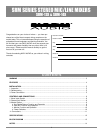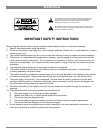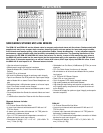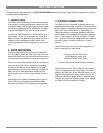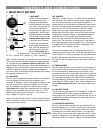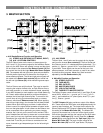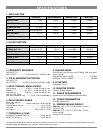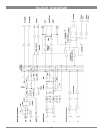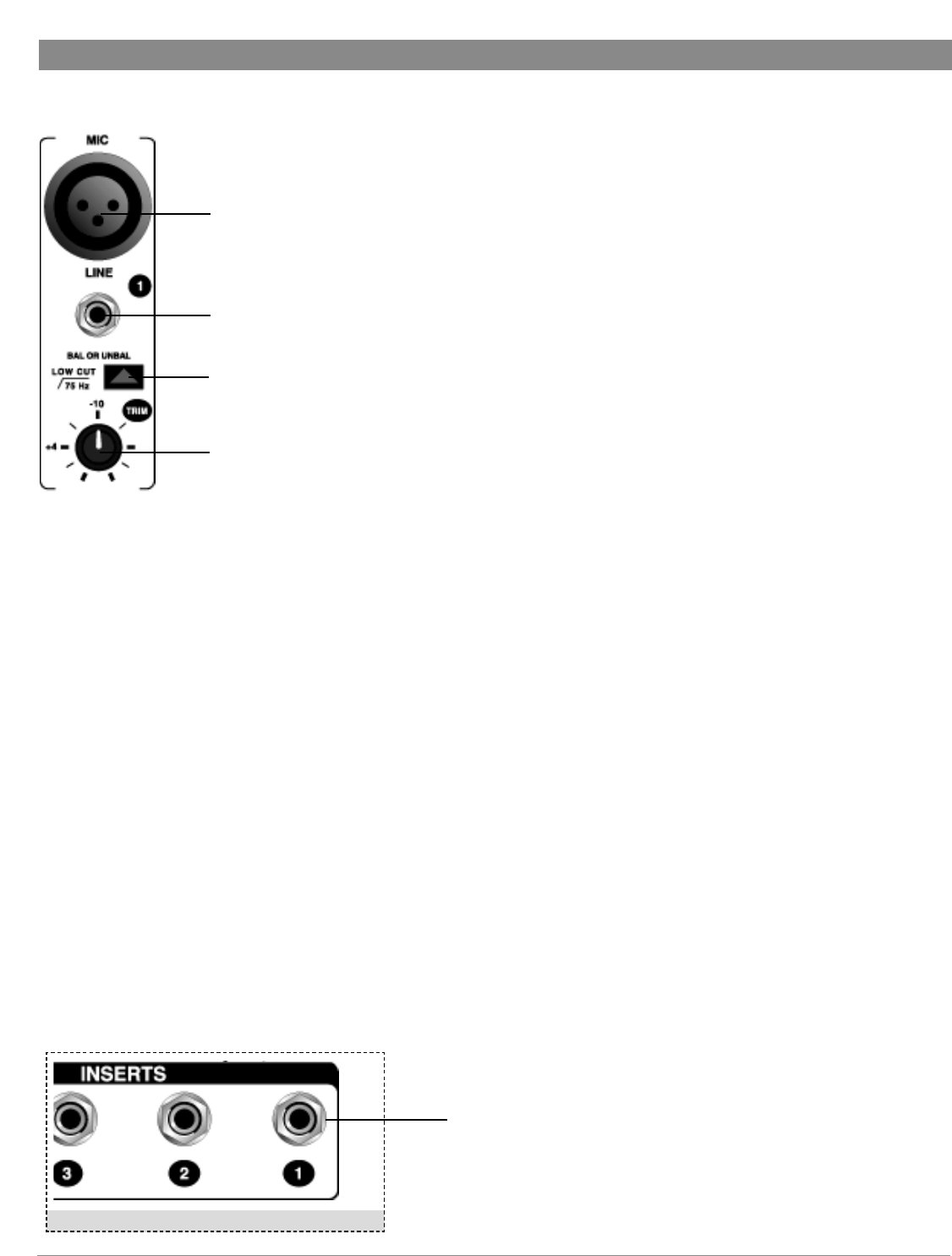
(29) INSERTS
Channels 1-4 (SRM-12X) and 1-6 (SRM-14X) are equipped
with rear panel insert jacks to connect external signal proces-
sors, such as compressors, noise reduction systems, or
effects devices, to the individual input channels. Insert points
are useful for adding dynamic processing or equalization to a
channel or the mix. Unlike reverbs etc., which are usually
added to the dry signal, dynamic processing is normally
applied across an entire signal. Here an Aux Send would be
inappropriate. Instead the signal is intercepted somewhere
along the channel, fed through the dynamics processor
and/or EQ, then returned to the console at the same point
where it left. The insert point is normalized, i.e. the signal is
only interrupted when a jack is plugged into it. The insert jack
is located pre EQ in the channel and is configured as: Tip =
send, Ring = return, Sleeve = ground.
The Insert can also be used as a channel direct output by
sending the signal from the ring. To use the Insert as a direct
output, insert a 1/4" phone plug halfway into the Insert jack so
the tip of the plug connects with the ring of the insert jack.
The jack will click into place when the connection to the ring
is made.
(4) TRIM CONTROL
The trim control adjusts the input sensitivity (channel gain) of
the mic and line inputs on the mono input channels. This con-
trol can be adjusted to accommodate input signals from a
wide variety of sources, from the high outputs from keyboards
or drum machines to the small signal outputs of microphones.
This wide range eliminates the need for Mic/Line switching.
The best balance of S/N and dynamic range will be achieved
if you adjust the TRIM control on each channel separately so
that the Peak Indicator LED (8) for that channel lights occa-
sionally.
(3) LOW CUT FILTER
Use this Low-Cut (high-pass) filter (18 dB/octave, -3 dB at 75
Hz) for reducing floor rumble, popping, breathing noises,
woolly bottom end, and to tighten up channels in a mix, etc. It
is most effective when used carefully in conjunction with the
Equalizer Controls (5).
(5) EQUALIZER CONTROLS
All mono input channels are fitted with a three-band EQ. All
three bands have up to 15 dB of cut and boost, with a center
detent for "off". The frequency response is flat when all three
EQ knobs are in the center detent position. The upper and
lower shelving controls have their frequencies fixed at 12 kHz
and 80 Hz respectively. The midrange control has a peaking
response at 2.5KHz (Q fixed at 1 octave). Remember that the
CONTROLS AND CONNECTIONS
6
1. MONO INPUT SECTION
(1) MIC INPUT
The Mic input is an electroni-
cally balanced XLR type
designed to accept signals
from any balanced low imped-
ance (Low Z) microphone. To
accommodate condenser
microphones, this input is also
equipped with +48VDC phan-
tom power globally switchable
to all XLR input jacks with the
Phantom Power switch (25)
on the back panel. Dynamic
or ribbon-type microphones
do not require phantom pow-
ering. It will be necessary to
adjust the channel gain with
the input Trim control (4) to
achieve a nominal operating level. The XLR jack is configured
for: Pin1 = ground, Pin2 = positive (+), Pin3 = negative (-).
[Note: The Mic inputs are more sensitive than the Line inputs.
Also, do not connect mics with the phantom power switched
on, as indicated by the Phantom Power On LED (26) in the
Master Section of the front panel. Never use unbalanced mic
cables with the Phantom Power switched on. Never short the
+48VDC to ground, as that can cause serious damage to
your mixer. Also, mute the Monitor/PA speakers when turning
the phantom power on or off.]
(2) LINE INPUT
The Line input is designed to accept balanced or unbalanced
line-level signals such as those from keyboards, drum
machines, or samplers. There is enough gain available on the
line input to accept even lower level signals, such as those
from an unbalanced microphone or guitar output. Use the
Trim control (4) to adjust for the desired level. If a balanced
signal is to be connected to the line input, then a 1/4" TRS
(stereo) phone plug should be wired for: Tip = positive (+),
Ring = negative (-), Sleeve = ground.
(Note: Only either the Mic or the Line input of a given channel
can be connected at one time. Never connect both simultane-
ously to the same channel.)
(1)
(2)
(3)
(4)
(29)
BACK PANEL




